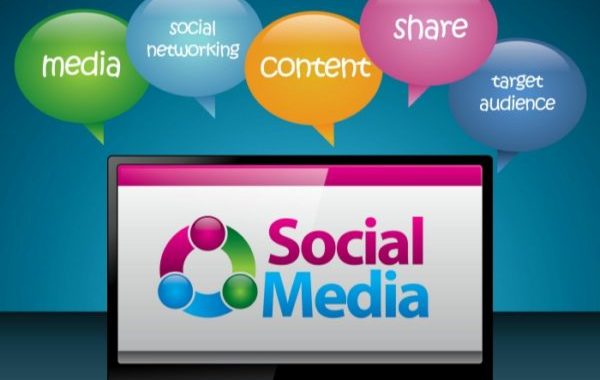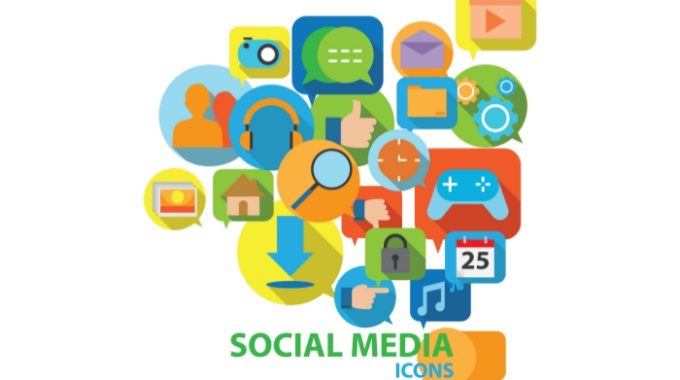
15 Best Practices For Twitter, YouTube, And Instagram
Chances are you’re familiar with these social networking and sharing sites: Twitter for quick exchanges with real and digital friends; YouTube for watching stand-up comedy and cute cat videos; and Instagram to get your dose of mouthwatering foodie photos and pictures of exotic locations.
However, using these networks to promote your brand and business is an entirely different story. And in this post, we’ll look at 15 best practices for Twitter, YouTube, and Instagram that you can apply today to take your social media marketing efforts (and results) to another level!
1. Respond To Tweets Quickly
The micro-blogging social network allows you to share any kind of information, videos, images, and status updates, in 140 characters or less. Twitter is the perfect platform for real-time conversations – and because of the social network’s nature, users have high expectations when they tweet to brands.
Lithuim Technologies, a digital marketing solutions provider, found that 53% of users expect brands to respond to their tweet within an hour. However, the number goes up to 72% when users have complaints.
Fail to meet the 1-hour mark and users may resort in unpleasant actions including brand shaming to express dissatisfaction. Best practices for Twitter encourage a swift response that will make Twitter followers more likely to buy, encourage family and friends, and recommend the brand through social media.
2. Use Hashtags Properly
Hashtags run the world of Twitter. These tags serve as filing cabinets for every single tweet that contain the keyword or topic. It also briefly explains what your tweet is about or if you’re part of a conversation or event.
You may get the urge to include as many hashtags as possible, hoping to widen your reach. But resist the temptation! Spamming hashtags doesn’t work and can get your account banned.
So stick to 2 to 3 hashtags instead. Make sure to include industry keywords, brand and campaign hashtags, and possibly trending hashtags if appropriate. And lastly, contribute to the conversation instead of just promoting your business!
3. Use URL Shorteners
Twitter’s character limit works against long URLs.
Fortunately, free URL shortening services like Goo.gl, Bit.ly, and Ow.ly exist. Long URLs of blog posts and inner pages (which you’re likely to promote) are cut down to size, giving you more characters to use for your tweets.
URL shorteners also have CTR tracking capabilities, allowing you to measure the success of your tweets in terms of clicks so you can tweet out more of what your followers want!
4. Time Your Updates For Maximum Exposure
Your Twitter audience doesn’t stay in one digital place, jumping from one social network to another or hiding the social media apps in the background when they’re busy. So to ensure your tweets get as much exposure as possible, post updates when the Twitterverse is most active.
A research study, which involved 4.8 million tweets, found that tweeting early in the morning leads to the most number of clicks while tweets during the evening and late night get the most favorites and retweets on average.
Take note, however, the best times to tweet varies across time zones. So use the recommendations above as a starting point, but experiment and analyze (using social media tools) to find when your audience is active and engaged.
5. Include Images To Increase Engagement
A picture can paint a thousand words – and boost your Twitter engagement!
Buffer found in their analysis of their past 100 tweets that tweets with images gain 18% more clicks, 89% more favorites, and 150% more retweets than their imageless counterparts.
Keep in mind, however, an image may confuse your audience especially if you tweet the title without explaining what the image is all about. So write a tweet to give the image a context instead, and include a link to your post or landing page.
YouTube
6. Optimize Your Channel
YouTube channels work like websites.
It houses all of the videos you upload to the site, and you want an optimized homepage that sets the tone for the rest of the channel. To optimize your channel, focus on 4 things: your icon, channel art, trailer video, and content organization using sections and playlists.
- Icon: Use an image size of 800 x 800 pixels for best results. Note that YouTube reduces your icon’s dimensions to a 98 x 98 pixel so steer clear from intricate designs. When in doubt, stick to your brand’s logo.
- Channel Art: This is the header image found at the top of your channel. Use an image size of 2560 x 1440 pixels, with a safe area of 1546 x 423 pixels right at the center. Text, website and social media URLs, logos, and other design elements should be placed within this safe area.
- Trailer Video: This video only appears to non-subscribers, and its purpose is to convert passersby to subscribers. Keep your trailer video short and leave some information gap, just hooking them enough to hit the subscribe button.
- Playlists And Sections: Anyone who owns an active YouTube channel knows how things can get messy once uploading videos become a habit. So to keep your channel tidy and easy to navigate, group similar-themed videos into sections or playlists.
7. Create Engaging Video Content
YouTube has 2 core groups of users: those looking for educational content and those who’re looking for emotionally-appealing content.
“I log in to YouTube to catch the latest promotions and discounts from different brands,” said no YouTube user ever!
Promotions and “salesy” messages should take a backseat when creating YouTube content. Instead, you want to create videos that either educate or connect to your audience at an emotional level. If your video doesn’t fit either category, reconsider your content idea.
8. Include Keywords In Your Title
Having the right content is just half of the battle. You also want to optimize your video’s title to make sure they’re found by your target audience.
Your title should honestly convey what your video is about – AND contain a keyword or phrase people use to search for your videos.
Backlinko’s Brian Dean recommends targeting on industry-related “how-to” keywords that get at least 300 searches on Google as such keywords can help you get traffic both from Google and Youtube.
9. Use Eye-Catching Custom Thumbnails
Fact: 90% of the best performing videos on YouTube have custom thumbnails. The right click-inducing thumbnails will attract more viewers and increase watch time – 2 of the most important metrics YouTube takes into account when ranking videos.
When creating a thumbnail for your videos, choose an image that best describes your video. Misleading thumbnails may lead to more views but viewers will click away if your video isn’t in line with your thumbnail. Worse, doing so may even violate the video site’s spam policies.
Another thing to note: 50% of YouTube’s traffic comes from mobile devices, and using high-resolution images that look great in big and small screens alike is a MUST. Consider using highly zoomed-in images and large fonts so viewers can easily see your thumbnails.
10. Cross-Channel Promotion And Interlinking
Your YouTube videos may reach your target users within the video site.
However, you don’t want fans and followers of your brand from other channels miss your YouTube content, do you? Don’t rest on your laurels after posting a new video. Instead, think of ways to expand the reach of your content.
Why not share the video to your Twitter followers? Or use your most popular stuff on your blog or email list? Oh! And last but not the least: always interlink at the end of each video so viewers don’t have to think what to play next.
11. Optimize Your Profile
Nobody wants to follow an empty account. So make sure you nail down the following elements when creating your Instagram profile:
- A branded profile image: You can use your business logo or a headshot (shot by a professional preferably) as long as it’s 110 x 110 pixels at least.
- A username that sticks: You can use your name or your business’ name. As long as it’s easy to remember, you’re good to go!
- Bio And Link: You get 150 characters for your Instagram bio – not a lot! So put that prime space to good use by adding keywords related to your business or industry while succinctly describing what your business does. And don’t forget to add a link to your website!
12. Shoot Square
Instagram relaxed its “square only” policy back in 2015, finally allowing users to upload photos in portrait and landscape.
However, shooting square photos and videos still works best as they’ll still appear as a center-cropped square in grid view. Fortunately, you can easily shoot square photos for Instagram as most digital cameras and smartphone have such a setting.
13. Engage With Your Target Audience
You have 3 options for engaging your target audience on Instagram: you can follow their profile, “Like” one of their posts, or drop a relevant comment. Of the 3 however, leaving comments have the best bang for the buck.
Getting new followers and “Likes” are pretty common for the average Instagram user. Matter of fact, every second on Instagram generates 575 “Likes” – but only 81 comments.
So give your target users a pleasant surprise by going beyond simply pressing a button to positively contributing to the conversation with a comment.
Do that and they’ll be 401% more likely to follow your profile!
14. Post People-Centric Content
Don’t let your Instagram profile turn into a glorified catalog of the goods you sell. People don’t come to Instagram to be sold and bombarding current and would-be followers with promotions will turn them off.
Keep your Instagram photos and videos people-centric (not product-centric). Instead of posting an image of your latest offering, you’d do better by posting a picture of a customer or follower who uses your product or service.
Alternatively, you can post photos of employees that went the extra mile to provide great service – a great way to humanize your brand.
15. Add Relevant Hashtags … Lots Of Them
Hashtags also run the world of Instagram. But while you want to stick to 2 to 3 hashtags in your tweets, you want to add more in your Instagram posts.
The photo-sharing social network allows you to add as much as 30 hashtags in your posts and comments. And while you don’t want to go beyond that mark, adding 11 hashtags to your post can result to 79.5% interactions for every 1,000 followers
Image: Photospin
Richard Kao is a printer workflow specialist and sales director for COSSales, a UK-based office and tech solutions provider. Interested in the latest marketing and sales trends, he often reads blogs like EggMarketingPR during downtime.



